Climbing Out Sample lessons
Key Concepts: “Peer Influence and Relationships” – “Kindness“
Get Started
With the Lesson Plans PDF
Climbing Out
(Peer Influence and Relationships) Learning Objectives:
- I can define peer pressure and explain how it affects people in negative ways.
- I can identify ‘pots’ or ‘potential pots’ in my life.
- I can identify how peers affect me in both positive and negative ways.
- I can describe how I can be a positive friend.
- I can list reasons for ‘getting out of the pot’ and describe what my future could be like if I did.
- I can explain the characteristics of positive leaders and positive followers.
Lesson Preparation:
This lesson will introduce the Climbing Out metaphor. You will use a video and activity to help teach this lesson.
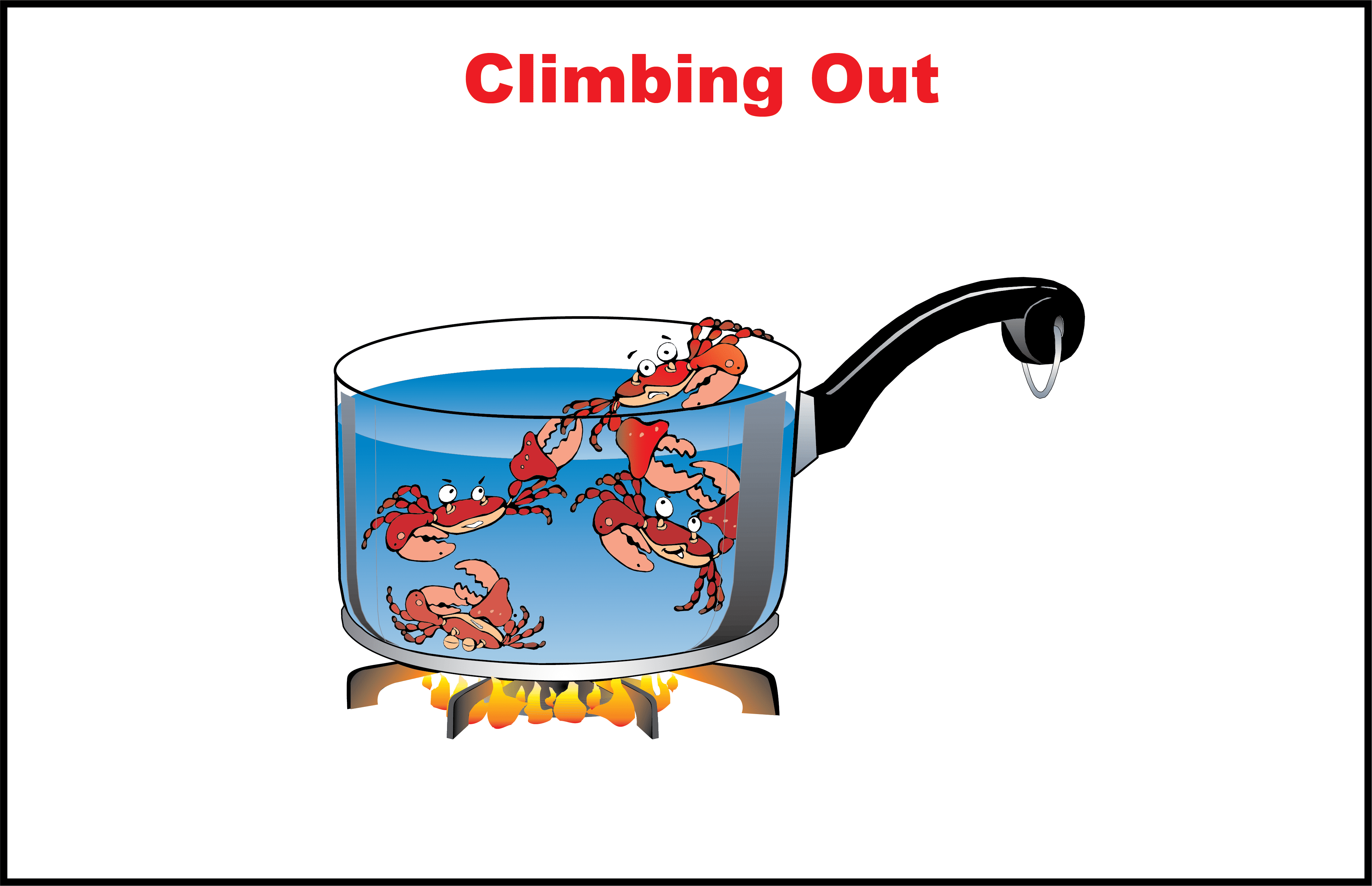
Lesson Tools:
(links found above)
- Lesson Plan PDF. You can use the PDF or this webpage, whichever you prefer. The Lesson Plan will guide you through your lesson.
- PowerPoint Deck For Windows. You can use this to present to your group during your lesson.
- Keynote Deck For Mac. You can use this to present to your group during your lesson.
- Make sure the Crabs in a Pot video in the Lesson Plan works and is cued ready to go. Practice sharing the video and stopping it at key moments.
- Read through and practice the Object Activity: Sucked In if you have never used it before. This one requires a bit of practice. There is an alternative video you can show in place of doing the activity if you choose to do so.
Setting the Class
(5-10 minutes)
Attention Getter
As students come in, choose a song to be playing. You could pull a song from the Suggested Playlists in the Climbing Out toolkit (link above) or you could play a popular song to build atmosphere. This is also a great moment to Surrender the One Up by greeting students by name and talking and asking them about things outside of school.
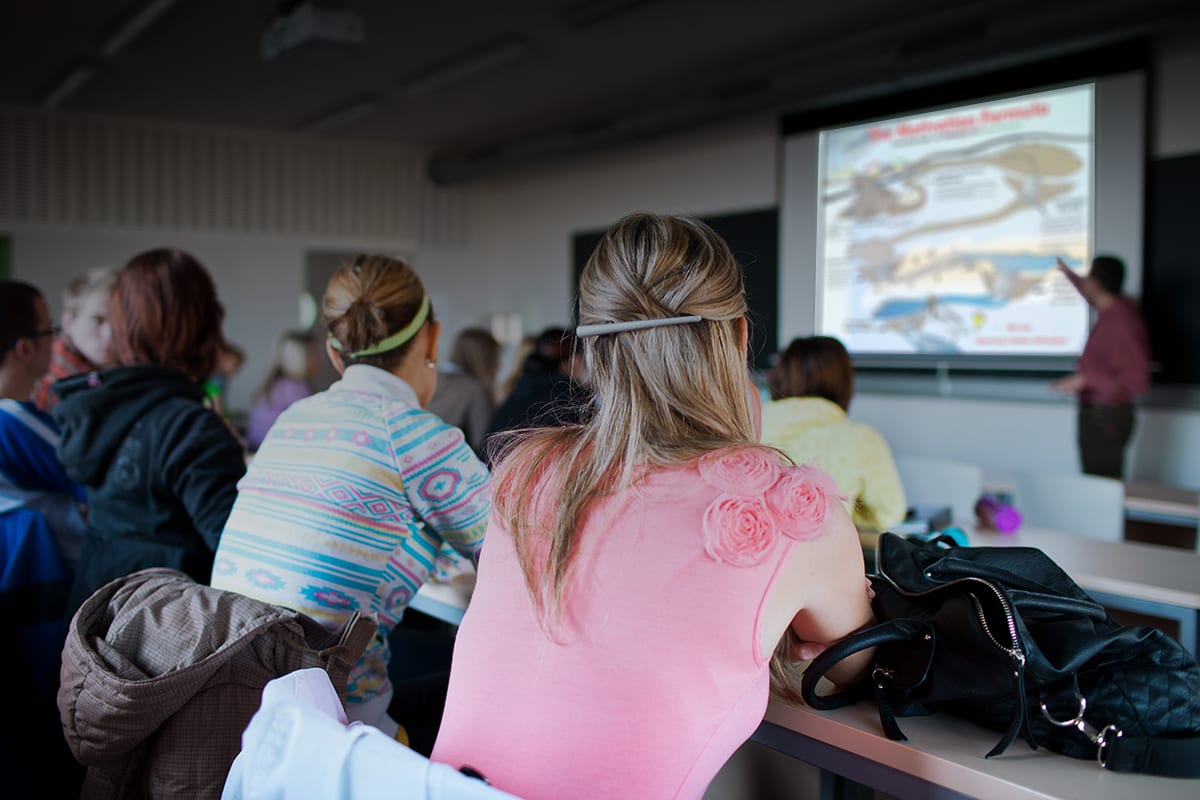
Check-in with your students by following the same protocol you established last time by giving your students an opportunity to say how their day is going on a scale from 1-10 (poor to awesome). A student can also say pass if they don’t want to say. They also have the opportunity to share why they rated it the way they did.
Share a simple outline for the day which includes you are excited to play with fire and cook crabs.
Videos
5 minutes
Prepare to show the video Crabs in a Pot to your students. Before you start the video explain that the video you are watching today is a perfect example of what you’ll be talking about today. Let’s see if they can figure it out.
Show the video clip in its entirety and ask the following questions. Feel free to substitute or add questions of your own:
- What happened in this video?
- What did you notice different crabs doing in the pot?
- Why would some of the crabs grab hold and not let the other crab out?
- What do you think this has to do with our lesson today?
Transition the conversation into the metaphor walkthrough.
Metaphor Walkthrough
30 minutes including activity
Whether you are using the Powerpoint Tool, projecting the metaphor, or providing individual copies, follow the sequence annotated by the red flags on the metaphor. It will be a guide to help you walk the students through the Metaphor:
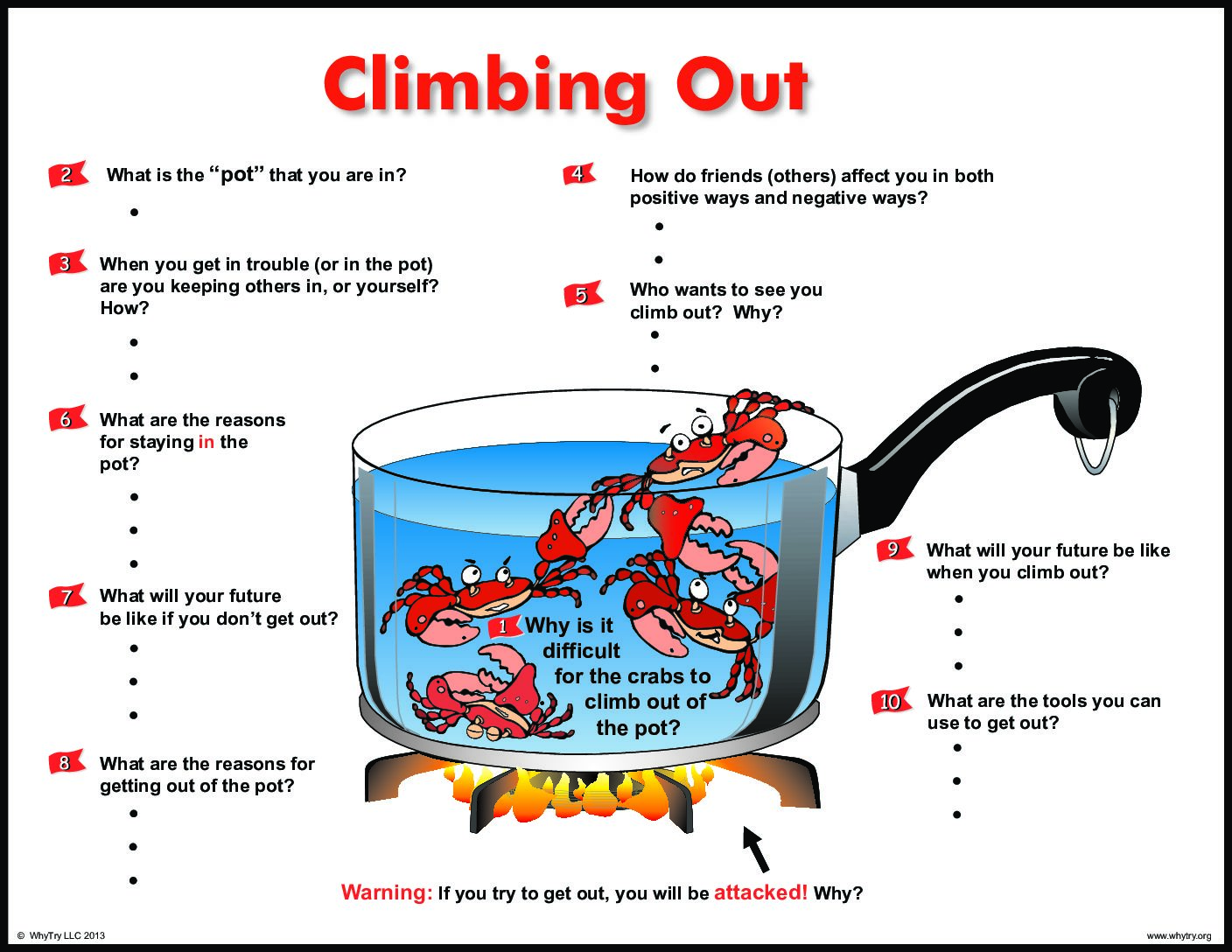
Discussion Point #1:
Discuss in order to cook crabs, you put them into the pot alive. Crabs will try to climb out, but rarely succeed because the crabs at the bottom often pull those crabs that are at the top, ready to escape, back into the pot. Ask the students to relate this visual analogy to their own lives. Ask: Is there anyone in your life who is trying to pull you down or get you into trouble? Or Have you ever noticed that when you are with certain people you get into trouble? Explain that the pot represents challenges or problems. A reality of life is that to overcome challenges, we cannot let others hold us down and keep us in the pot. On the other hand, emphasize that positive peers can help them climb out of the pot and deal with challenges. Stress that if they are going to stay on the track to opportunity, freedom, and self-respect, they must overcome peer pressure. Explain that you will be going over all these details during the lesson.
Discussion Point #2:
Say: I want you to answer on your own, what is the pot that you are in or the pots that kids your age find themselves in? Or, what are the problems that are causing you to crash? Explain that usually the pot represents situations where someone finds themselves in repeatedly. They keep getting in trouble for the same thing and feel stuck. The pot really represents that loop and they are usually in it with other friends.
Discussion Point #3:
Explain there is a good chance that your friends are keeping you in that loop or that you or keeping your friends in that loop. Read discussion point 3 aloud and ask what does this look like? What does it mean to keep others in the pot? How do you know if your friends are holding you back or pulling you back in? Write on the board the answers your students come up with. Some of those answers may include:
- We are always in trouble together for the same thing.
- It is always one person’s idea.
- When you try to do something different, they say or do something that makes you feel like you shouldn’t leave them alone.
- Although it is negatively affecting your life, friends encourage you to do that thing.
Afterward, discuss that they too have the ability to pull their peers down or to be a true friend and help others climb out of the pot. Ask the students to share an example of a time when they helped a friend or when a friend helped them. Point out that real friends stop us from crashing and help us get out of the loop. (Briefly review the Reality Ride.) Emphasize that one of the greatest experiences in life is helping others climb out of the pot. Ask the students to identify anyone who has overcome peer pressure (a relative, sports hero, celebrity, etc.). Discuss that most people who are successful in life don’t let negative people pull them down, and surround themselves with positive influences.
Discussion Point #4:
Read aloud discussion point #4 question. Ask the students to partner up in pairs, triads or dyads and make two lists that describe the following. Give students five minutes to create their list and create a Venn diagram on the board that shows what friends do that are negative, positive, and their may even be some overlap or gray area. Discuss the results with the students and then transition to the Learning Activity.
Transition to Activity
Learning Activity: Sucked In
Follow the Sucked In instructions found below. A link to this activity can also be found in the resources section at the top of this page. After the activity, don’t forget to use the processing questions to discuss how the activity relates back to the discussion you have had about Climbing Out.
Activity Side Note: If you are either uncomfortable doing this activity or if you simply cannot because of regulations, use the video in the online toolkit titled, egg in a bottle. Use the same processing questions found within the activity description to help you.
Introduction:
This activity demonstrates how peer pressure can lead us to get “sucked in” to choices we wouldn’t make otherwise.

Activity Details:
- Spatial Requirements: Regular classroom setup; little or no space required
- Activity Type: Object lesson
- Group Size: 1 or more
- Time: 5-10 minutes
- Materials:
- 1 clean, medium to large bottle – labels removed – with an opening slightly larger
than a hard-boiled egg (sports drink bottles like Vitamin Water with a larger opening or a glass fruit juice bottle like J.R. Knudsen work best) - Matches or a lighter
- 1 teaspoon of isopropyl alcohol, dropped into the bottle prior to the activity OR 1
piece of notebook paper - 1 large peeled hard boiled egg
- 1 clean, medium to large bottle – labels removed – with an opening slightly larger
Activity Instructions:
After putting the alcohol into the bottle, place the hard-boiled egg and the bottle or jar on a table in front of the class. You might have a few volunteers come up and try to force the egg into
the bottle. (Have an extra egg handy if you do this.) Demonstrate that the egg can’t be forced
into the bottle, just like we can’t be forced to make bad choices.
Option 1: Alcohol
(works best with a glass bottle)
Light the match and drop it into the bottle. Immediately place the egg on the lip of the bottle and watch the egg drop in. Be sure that the narrow end of the egg is pointed into the jar.
Option 2: Notebook Paper
(works best with a plastic bottle)
Roll up the notebook paper and light it with the match or lighter, then insert it into the mouth of the bottle. Immediately place the egg on the lip of the bottle and watch the egg drop in. Be sure that the narrow end of the egg is pointed into the jar. The eggs should be sucked into the bottle without suffering damage.
Don’t be alarmed if there is very little flame. Not much is needed to complete the demonstration.
Explain the science behind the activity. The flame consumed the air inside the bottle, creating a vacuum. The air pressure pushes down on the outside of the egg then forces it into the bottle.
Processing the Experience:
- Why do you think the egg went into the bottle when the flame was used?
- How is this activity like peer pressure? What is an example of a situation where it is difficult to say no? (Explain that the flame was like peer pressure and sucked the egg into the
bottle, just like we sometimes get sucked in to making bad choices we would otherwise
resist. - Are we more susceptible to peer pressure by being in the wrong place at the wrong time?
How? (The egg was in the wrong place at the wrong time – i.e. at the neck of the bottle
when a flame was burning). - Is it harder to say no the longer you are in a situation? Why?
- What can you do to help yourself resist the pressure to do something that might be harmful to you?
- How do you get out of negative peer pressure?
Metaphor Walkthrough
Continued

Discussion Point #5:
Relate point five back to the Reality Ride and explain how taking the Harder But Worth It track is not easy. Climbing Out is not easy, and it is important to identify people who can help. The first step is asking who wants to see me climb out. Have them record this on their metaphor handout, journal or even in their phone. Its important for them to physically acknowledge the people who want to see them climb out of the pot. If any student responds with no one, then this is a moment for you to say that you are one of those people.
Discussion Point #6 & #7:
These two discussion points can be done together. It is a natural conversation to discuss what reasons there would be for staying in the put, but then following up with what might happen if you do stay in the pot. Say you understand that peers and friends are very important to them, and that it is very difficult to overcome negative peer pressure. Once we are accepted by a group of peers, walking away is extremely hard. Ask why is it so hard? After leading a discussion answering this question follow up with discussion point #7 asking what will happen though if you don’t get out?
Discussion Point #8 & #9:
These two discussion points can be done together. It is a natural conversation to discuss the reasons for getting out of the pot and what the future would look like if you do. Relate this back to the Reality Ride’s Harder But Worth It Track when you answered what life would look like if you ride it. Have students write down what their life would look like if they were no longer in any pot they have identified. They can think about this in terms of tomorrow, this year, and even five years down the road. You should process this in either small groups or as an entire class. You can list their answers or even have them write them down on their own.
Discussion Point #10:
Say I want to acknowledge that even if you want to get out of the pot. It could be difficult. Ask students what they will need to do in order to get out of the pot? Special Note: This point will look very different depending on what students and how many students you are working with. You may spend a lot of time on this and actually develop action plans identifying stopped behaviors and started behaviors. Or if this is a tier 1 lesson for an entire class, you may want to answer this generally as a whole group. Either way, after this discussion point is finished, its very important to end the metaphor walkthrough on the next point:
Discussion Point Warning:
Say I applaud any of you who have made the decision or are thinking about making the decision to climb out of a pot. However, it isn’t easy. As we learned today from this metaphor, crabs grab each other and pull each other down. The same could happen to you. Why do friends do this to each other? Lead the discussion about why we pull each other down. This discussion is very important for students to hear because some students stuck in a pot may have not realized how and why their friends pull them down and this discussion may empower them to really want to climb out. Explain that ‘being attacked’ could mean several different things and list a few of those things.
Wrap-up:
(5 minutes)
Stand up and form a circle. Explain that this metaphor is really about what it means to be a good friend. Remind them that you know a friend is a positive influence when they encourage and help you to do things that help your life and not hurt your life. End on the positive side, by asking each student to identify a friend or someone in their life they would consider to be a positive friend. Ask them to describe their friend in one word. Go around the circle and have each person share.
After the Lesson
Say goodbye to students as they leave your class. Thank them for participating and tell them you are excited for next time! You may even want to have music from the suggested playlist or other music playing as they exit your room or transition to new content.
Reflect on your lesson: Ask yourself what went well? What didn’t go as planned? Did any of your students respond in surprising ways? If you were to do the same lesson again, what would you consider doing differently?.

Climbing Out – (Kindness)
Elementary Sample
Key Concept: “Kindness”
Climbing Out (Kindness)
Summary
Climbing Out lesson plan for first and second grade is going to focus on the importance of being kind. It will focus on identifying different ways students can show kindness to one another in multiple settings. All peer relationship metaphors use animals to help facilitate learning concepts. The first and second graders will use the capybara, kindest animal on Earth, to learn.
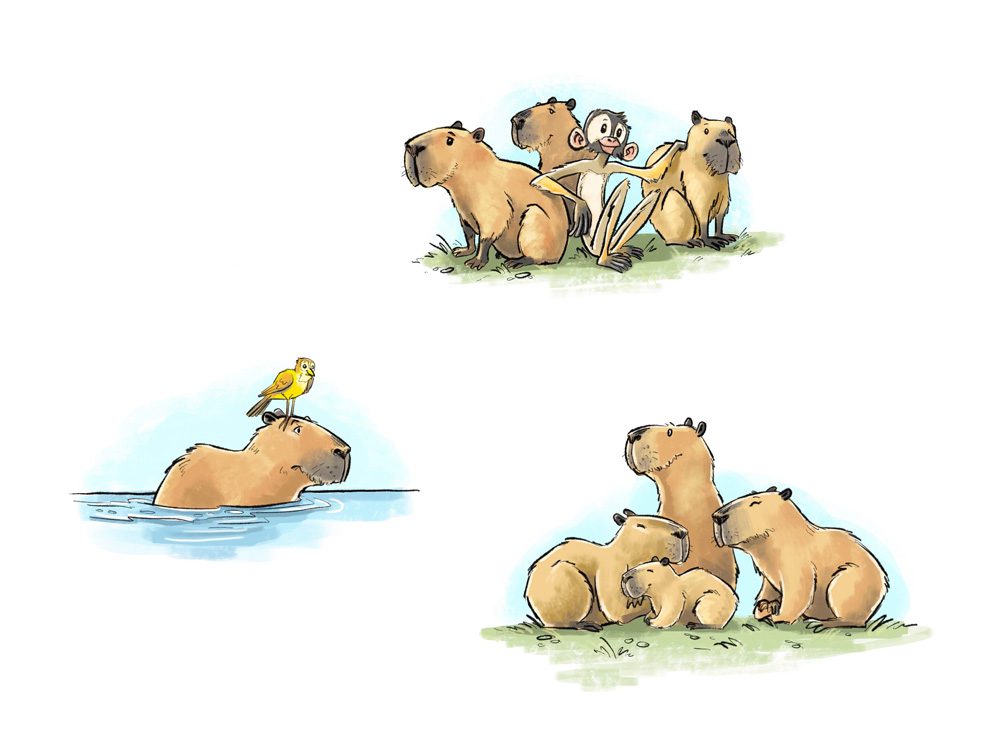
Climbing Out Lesson Elements
- Facilitate the Activity: Kindest Creature
- Framing the Metaphor / Using Video: Kindest Creature on Earth
- Resilience Booster: Acts of Kindness
Climbing Out Vocabulary
- Qualities or Attributes
- Friend
- Kind
Climbing Out Learner Objectives
- I know what it means to be kind
- I can identify ways to be kind with others
Climbing Out Part One
Facilitating the Activity: Kindest Creature
Overview:
In this activity students will think about what the world’s kindest creature would look like. What attributes would the creature have? What makes it kind? Students will be given an opportunity to create that creature artistically and present it to others with their reasons.
Materials:
- Poster, paper, or any medium to artistically create a creature
- Art materials such as markers, colored pencils, crayons, etc.
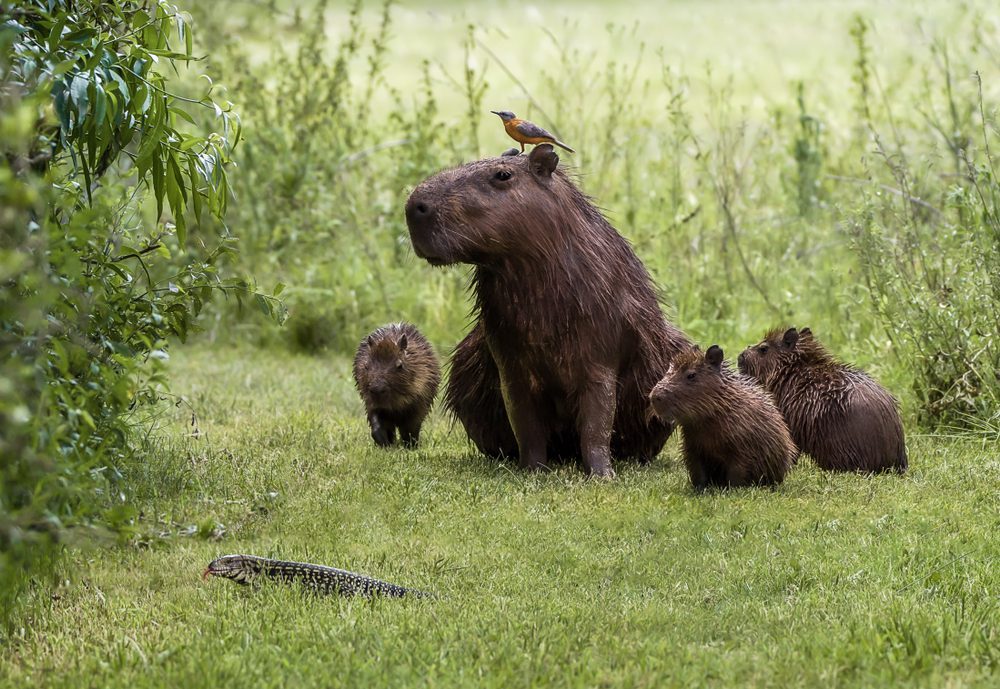
Instructions:
You can invite students to do this individually, in partners, or in groups of 3 or 4. Display the work KIND on the board and tell students that today we’re going to be using what we know about being kind to design the kindest creature in the universe.
Give students 5 minutes to create a list in their groups of all the qualities this creature might have. For example the list might include helping others, giving food, protecting others, etc. They may even come up with ideas that don’t make sense, but if it demonstrates being kind, then it qualifies. You also should explain what a quality or attribute is for your students.
Grade level note: In first grade you will possibly want to create this list together as a class. In second grade you could probably come up with an example or two together, but also give them time to come up with ideas in partnerships or groups.
Now you will invite your students to design the creature using the qualities you came up with. You will provide them with a poster paper, butcher paper, or even just a regular blank paper or space to create the creature. The creature can look like anything, but they are trying to imagine what it would look like if it had all of the qualities.
When students are finished, you will give them an opportunity to share their ‘Kindest Creature’ to each other. Depending on your time allowance, this could simply be a roam and share or actual presentations.
Process the activity:
- What qualities in our list did you see most often in everyone’s pictures?
- Which picture besides your own did you like and why?
- What real animal on Earth do you think would be considered the kindest animal on Earth?
- Why do you think that?
Framing the Metaphor / Using Video
Explain to students that there is actually an animal that is considered the kindest on Earth. You may even want to have written down everyone’s guesses on the board. Then share the video.
Video One: Capybara being Friends with other Animals
(1st grade)
Video Two: Capybara are the Friendliest Animal Compilation
(2nd grade)
Processing questions:
Some people believe that Capybara’s are the kindest animals on Earth.
- After watching the video, what examples did you see of the Capybara’s being kind?
- What qualities does the Capybara have that we talked about the kindest creature having?
- Why is it important to be kind?
- Why is it important to be kind at school?
Metaphor Walkthrough
Flag #1
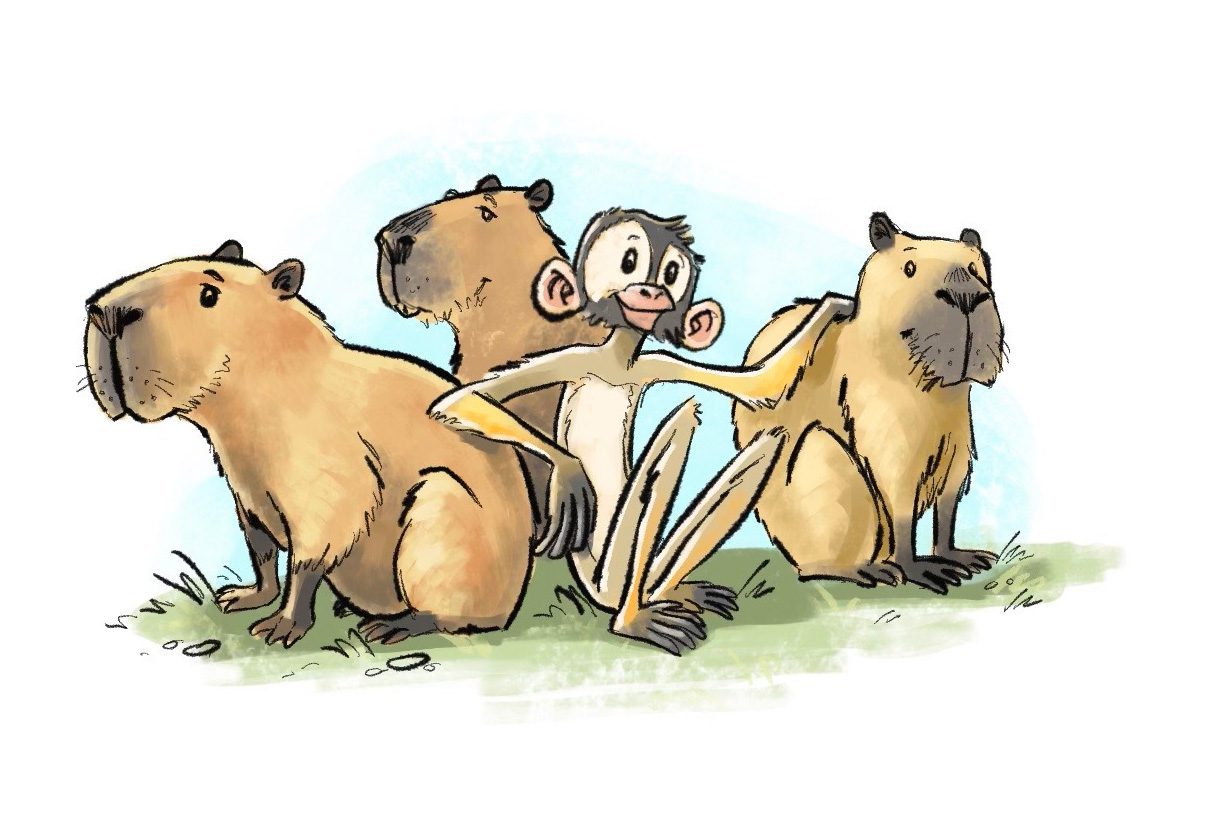
Show the visual metaphor of the Kindest Animal on Earth: A picture of Capybaras. Explain to your students that you can see the Capybara is being kind in this picture in three different ways. In this first image, how is the capybara being kind? (including other types of animals). Explain that this animal isn’t like the others, but it is including the other animal anyway. Ask why that is an important way to be kind and how can we do that at school?
Flag #2
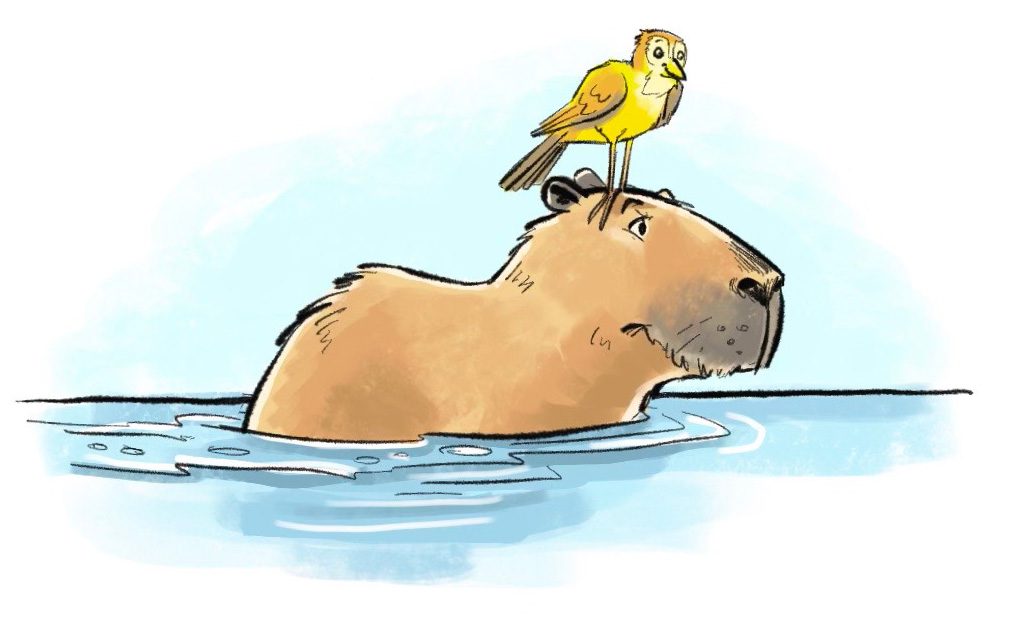
Point to the next section of the visual metaphor. How is the capybara being kind here? (helping others). Explain the concept of helping others and just like the previous example, ask why that is an important way to be kind and how can we do that at school?
Flag #3
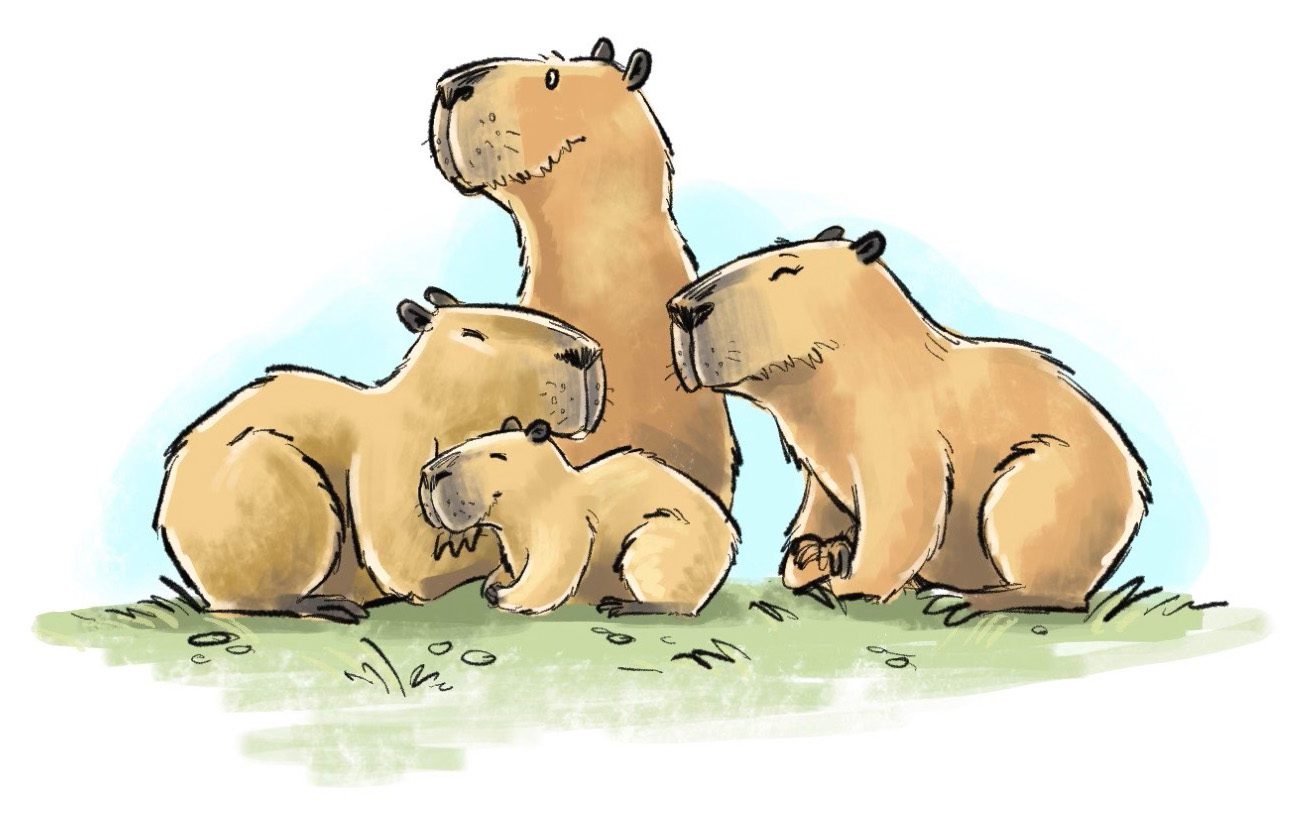
Point to the next section of the visual metaphor. How is the capybara being kind here? (looking out for each other) Explain the concept of looking out after others. Ask why that is an important way to be kind and how we can do that at school?
Grade level note: During the visual metaphor questions and processing, you can ask 2nd graders to think of examples in each area of what it looks like to be kind in other places as well as school. Have them share examples of being kind in that way at home and at play with their friends.
Resilience Booster: Acts of Kindness

The Acts of Kindness is a way to invite your students to look for ways their classmates are being kind. Explain that every day after this first lesson, you will be asking students to share examples of acts of kindness their classmates have done for each other. We recommend that you only take two examples each day.
Using the Capybara Acts of Kindness or creating your own, explain that every act of kindness will be written on one of the capybara cut-outs and put on display (bulletin board, wall, etc.) As soon as the class has found enough acts of kindness to create their own herd of capybaras, the class will celebrate the kind acts they’ve seen happening in their class. The class prize can be anything you think is appropriate for your students, setting, and space. It may be an extra 20 minutes where you lead them in some games and activities, it may be a food reward or class party.
We recommend the number of acts required to be the number of students x 2. That way if you are taking two examples each day, you know roughly when you need to be prepared and plan ahead to celebrate with the reward.